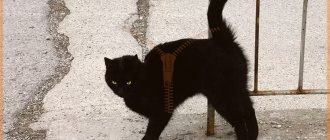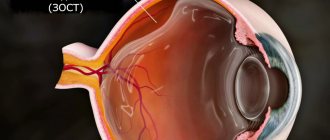What is the name of the phobia, fear and fear of cockroaches?
Blatophobia is fear, dread, and aversion to cockroaches.
According to scientists, women are more likely to suffer from blattophobia. Cockroaches rank first among other fears of insects, such as spiders. This aversion to cockroaches may be due to many factors, such as their anatomical structure, their ability to carry disease, their feeding on rot, and their ability to fly.
For many people, this phobia can lead to obsessive-compulsive disorder (OCD), which causes a constant fear of uncertainty that a cockroach will appear at any moment.
Causes of fear of cockroaches
The factor that provoked the development of blattophobia may be:
- Literature, television. Insects presented in unsightly light in books or films can cause an involuntary fear of any insect, including cockroaches. Suffice it to recall the fairy tale “The Cockroach”, written by the famous K. Chukovsky.
- Appearance of cockroaches. It is unlikely that anyone will be moved by the segmented legs of cockroaches and long mustaches. And if you remember the ability of these insects to multiply quickly, it becomes clear that no one wants to see such guests in their apartment.
- Stress. Children are very sensitive to everything that surrounds them. Therefore, if a child is afraid of a cockroach in childhood, he may retain a fear of the insect for the rest of his life. Moreover, it is not easy to survive, but to develop into a phobia of fear of cockroaches.
- Infections. Cockroaches are known as carriers of many diseases, which is why everyone fears them, even those who are not at all afraid of these insects.
- Education by fear. To cope with a naughty child, adults sometimes scare children, usually using the same unpleasant things that they used to scare them.
- Inheritance or stereotypical behavior. Children involuntarily repeat all the actions of their parents. Accordingly, if a mother or father is afraid of cockroaches, children will also be afraid of them.
Cockroach
Symptoms
Fear of cockroaches very often leads a person to compulsive behavior, which is often difficult to cope with.
People with this phobia try to thoroughly clean their home, constantly sweeping and cleaning kitchen and bathroom rugs, etc.
Additionally, a person may experience the following physical symptoms after seeing a cockroach:
- Labored breathing.
- High heart rate.
- Feeling of suffocation.
- Chest pain.
- Numbness.
- Excessive sweating.
- Difficulty thinking, reasoning, or speaking clearly.
- Inability to distinguish the real from the unreal.
- Panic attacks.
- Paralysis, inability to move.
Fear of cockroaches can get out of control or become very dangerous when a person tries to kill cockroaches while driving, which can lead to a serious accident.
Symptoms of the disease
Manifestations of the disease can be different:
- Panic attack – when a person sees a cockroach, he begins to panic and go hysterical. He screams, starts running around the room, squeals, and for a long time cannot control his emotions and calm down.
- Irrational actions - a person does something that is not typical for him in his normal state. There are times when a blattophobe, in a state of fear, begins to constantly clean, wash and clean the room.
- Somatic manifestations - at the sight of an insect, a person begins to have a headache, his heartbeat quickens, he feels pain in the heart area, his hands begin to shake violently.
Causes of blattophobia
Our prehistoric ancestors had to sleep in caves, a great place for cockroaches, which love heat, darkness, and humidity.
Due to this fact, we find one of the most accurate theories to explain some phobias: Martin Seligman's priming theory.
Priming theory consists of an overview of the biologically oriented anxiety conditioning model. This theory does not suggest that phobias are innate, but rather that humans have an innate ability to learn phobic responses.
Martin Seligman states that phobias have 4 properties:
- Selectivity: Phobias are limited to a specific range of stimuli that are associated with specific dangers that were important during the evolution of the species.
- Easy to acquire: Phobias can be acquired in one attempt and without traumatic stimuli.
- Extinction resistance.
- Irrationality: disproportion between the real danger of the stimulus and the alarming reaction.
Phobias are examples of prepared learning and therefore have biological-evolutionary significance. They consist of primitive and non-cognitive associations that cannot be easily changed by logical arguments. These four properties are properties of prepared learning.
Family conditioning is a topic that does not generate much agreement today regarding the acquisition of phobias. Some people think it is due to genetics, others believe it is simply an indirect conditioned response.
Causes of fear of insects
Like many other phobias, fear of cockroaches usually appears in childhood. If the disease is not treated, it will persist for the rest of your life. The most common causes of uncontrollable panic at the sight of insects are:
- Blattophobia in relatives - a child’s attitude to the world around him is formed under the influence of the people around him. By copying the behavior and habits of adults, children often adopt their phobias and fears.
- Severe fear, stressful situation - the sudden appearance of an insect in an unexpected place can be very frightening. In the future, insects will be associated with the stress suffered and the negative emotions experienced.
- Fear of diseases - blattophobia is formed against the background of a pathological fear of infection and the simultaneous awareness that cockroaches are carriers of infections and bacteria.
- The plots of films and books - fictitious stories with cockroaches in the leading role, traumatize the child’s psyche and cause the development of the disease;
- Intimidation - sometimes, when talking about insects, parents unconsciously exaggerate and scare the child. This may later manifest itself as a phobia.
The fear of cockroaches in people suffering from blattophobia extends to all types of insects. Sometimes even the mention of a cockroach can lead to a state of panic.
Treatment for fear of cockroaches
The first step will definitely be in the hands of a specialist, who will first check whether the fear of cockroaches is a phobia or whether they are simply not very pleasant. If a disorder does exist, the most common therapeutic range would be as follows.
Exposure therapy
If anxiety levels are very high, it is preferable to first perform creative coping techniques in combination with relaxation training (preferably Jacobson's progressive relaxation) so that you can then deal with the situation directly and directly.
Typically, this technique in the imagination consists of planning out situations that arouse the least to the most anxiety, and then getting used to a certain level of anxiety. When a person no longer feels any anxiety, you need to move on to the next situation.
Principles of treatment
Blatophobia is a complex disease characterized by the fact that it is difficult to treat. Of course, you can be afraid, but is there a way to hide it from others all your life? If a person approaches this issue responsibly, treatment may take a very short period of time.
Treatment with drugs
Psychological problems often require medication; in the case of fear of cockroaches, the following may be prescribed:
- Tricyclic antidepressants. They activate neurotransmitters - substances through which impulses are transmitted from a nerve cell through the synaptic space between neurons. Such drugs include Sertraline, Moclobemide or Fluoxetine.
- Benzodiazepines. Such drugs are classified as weak tranquilizers, they are taken directly during panic fear - Phenazepam, Imipramine, etc.
- Beta blockers. Usually used for the treatment of cardiac pathologies. But as you know, stress can provoke problems in this particular system of the human body, i.e. complex treatment should include these drugs.
- Psycholeptic drugs. Such drugs block the feeling of increased anxiety during an encounter with an insect. Buspirone is usually prescribed for blattophobia.
Psychotherapeutic treatment
Taking medications will not completely eliminate fear. Medicines can help only temporarily, directly during a panic attack. Therefore, you often cannot do without the help of a psychotherapist:
- A virtual reality. In order to carry out treatment with this method, it is necessary to create a situation for the patient in which he will be close to the object of his fears, but will feel safe. Blattophobe puts on a virtual reality helmet and watches a video in a three-dimensional projection in which cockroaches are present, but they are just an element of a computer program.
- Hypnosis. Any phobia can be overcome in this way: the doctor puts the patient into a trance state and, by asking questions, reveals the true cause of the fears. However, few people decide to undergo such a procedure, all because of the same fear.
- The method of neurolinguistic programming is capable of revealing all the nuances of the reality in which the patient has placed his consciousness. During an NLP session, a new model of perception of the surrounding world is created: a kind of brain reboot occurs.
- Simulation of situations. After identifying the etiology of fear, the psychotherapist, simulating various situations, teaches the patient how to behave in them, suppressing panic.
Manifestations of fear of cockroaches in humans
Symptoms of Blatophobia vary from person to person, depending on their personality characteristics and state of mind. Additionally, patients with cockroach phobia may have any number of triggers, from actual live cockroaches to a simple photograph. The severity of symptoms depends on the person's level of fear.
Typically, symptoms of Blattophobia include an extreme fear of cockroaches and simply a feeling of discomfort or anxiety when exposed to cockroaches or any environment in which they may live.
If the level of fear is high enough, exposure may cause a panic attack. Panic attacks are heightened levels of fear and anxiety during which a person experiences a variety of physical symptoms. These symptoms include rapid heartbeat, difficulty breathing, weakness, fainting, dizziness, tingling or numbness in the arms, extreme feelings of dread, loss of control, and chest pain.
Signs of blattophobia
Fear of cockroaches is not always a phobia. The disgust and disgust that many experience at the sight of insects are considered signs of the disease if the following symptoms are present:
- cardiopalmus;
- shaking hands and lips;
- nausea, headache;
- sweating;
- weakness;
- incessant hysteria, panic;
- non-standard behavior.
People suffering from blattophobia, when encountering a cockroach, are not able to make adequate decisions and control their actions. They have a desire to run away, hide, call for help. They try to protect themselves from contact with insects by using thick, closed clothing, regular cleaning and treating the premises with chemicals.











